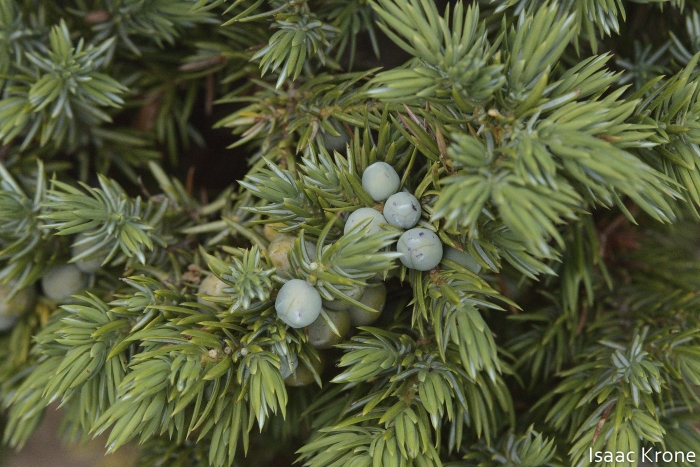Common Juniper
(Juniperus communis var. depressa)
Common Juniper (Juniperus communis var. depressa)
/
/

Isaac Krone
CC BY 4.0
Image By:
Isaac Krone
Recorded By:
Copyright:
CC BY 4.0
Copyright Notice:
Photo by: Isaac Krone | License Type: CC BY 4.0 | License URL: http://creativecommons.org/licenses/by/4.0/ | Rights Holder: Isaac Krone | Publisher: iNaturalist | Date Created: 2021-07-15T18:04:22-07:00 |








































Estimated Native Range
Summary
Juniperus communis var. depressa, commonly known as Common Juniper, is an evergreen shrub native to a variety of habitats including boreal forests, rocky sites, and tundra across Canada and northern parts of the USA, as well as in mountainous regions. It typically grows to a height of 3-4 feet (0.9-1.2 meters) and a width of 8-10 feet (2.4-3 meters), forming a low, spreading mat or mound. The plant features needle-like leaves and produces small, blue-black berry-like cones. The flowers are generally inconspicuous, with separate male and female plants. Common Juniper is valued for its hardiness, adaptability, and the aromatic wood and berries, which are used in flavoring gin.
Common Juniper is often used in landscaping for ground cover, rock gardens, and erosion control due to its extensive root system. It thrives in full sun but can tolerate partial shade, and it prefers well-drained soils. While it is drought-tolerant once established, it benefits from medium amounts of water. This species can be susceptible to fungal diseases and may suffer from root rot in poorly drained soils. It is also important to note that while Common Juniper is not typically invasive, it can spread readily in suitable conditions.CC BY-SA 4.0
Common Juniper is often used in landscaping for ground cover, rock gardens, and erosion control due to its extensive root system. It thrives in full sun but can tolerate partial shade, and it prefers well-drained soils. While it is drought-tolerant once established, it benefits from medium amounts of water. This species can be susceptible to fungal diseases and may suffer from root rot in poorly drained soils. It is also important to note that while Common Juniper is not typically invasive, it can spread readily in suitable conditions.CC BY-SA 4.0
Plant Description
- Plant Type: Shrub, Tree
- Height: 3-6 feet
- Width: 8-10 feet
- Growth Rate: Slow
- Flower Color: N/A
- Flowering Season: Non-Flowering
- Leaf Retention: Evergreen
Growth Requirements
- Sun: Full Sun
- Water: Medium
- Drainage: Fast, Medium
Common Uses
Bird Garden, Deer Resistant, Drought Tolerant, Erosion Control, Fragrant, Groundcover, Hummingbird Garden, Low Maintenance, Rabbit Resistant, Street Planting
Natural Habitat
Boreal forests, rocky sites, and tundra
Other Names
Common Names: Dwarf Juniper , Prostrate Juniper , Depressed Juniper , Ground Juniper , Low Juniper , Old Field Juniper , Genévrier Commun Déprimé , Genévrier Du Canada , Genévrier Nain
Scientific Names: Juniperus communis var. depressa , Juniperus communis subsp. depressa , Juniperus canadensis , Juniperus communis var. canadensis , Sabina multiova
GBIF Accepted Name: Juniperus communis var. depressa Pursh